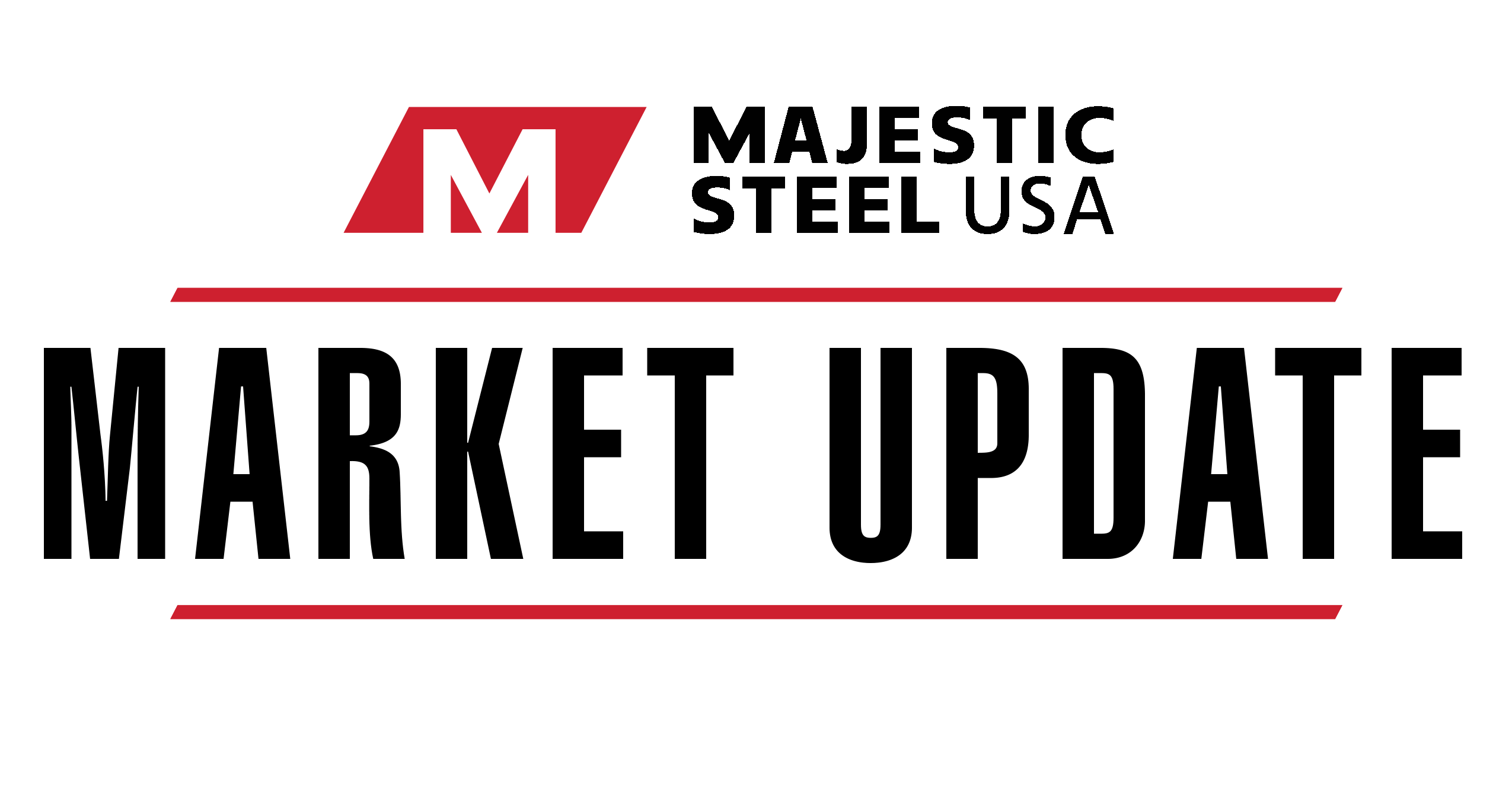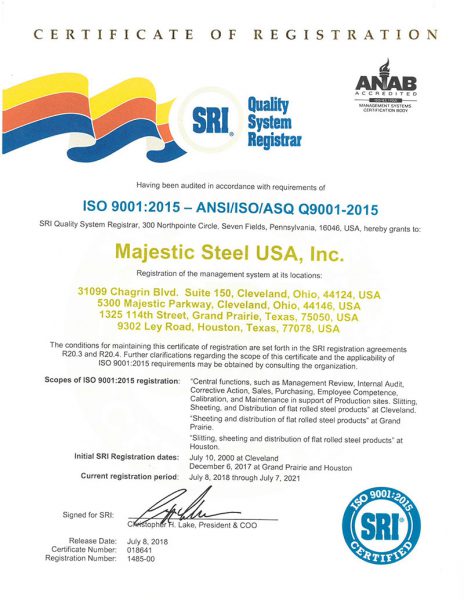Market Update | July 2, 2025
MANUFACTURING SECTOR ACTIVITY CONTRACTS AT SLOWEST RATE SINCE FEBRUARY
Economic activity in the manufacturing sector contracted in June, albeit at its slowest rate since February. The June Manufacturing PMI came in at 49.0, up from 48.5 in both May and June of last year. Despite the improvement, the index has remained in contraction for four consecutive months. The decent (4.9) jump in the production index, which pushed it into expansion at 50.3, was not enough to overcome the slides seen in new orders (-1.2), employment (-1.8), and backlog of orders (-2.8). Inventories continued to contract in June but at a much slower rate and are now just a tab below neutral.
PRICE
Domestic flat rolled pricing slipped slightly this week but remains in the relatively tight range that it has been in over the past month.
- Weaker spot purchases have helped keep lead times short which has kept pricing from moving higher.
- The market will take time to fully realize that the domestic suppliers have no incentive to lower prices and the new pricing range will be elevated.
Input Costs
Zinc pricing was up this week but remained in a very tight range.
- Pricing increased to $1.23/lb this week, slightly above the thirty-day average of $1.20/lb.
Spot iron ore pricing increased slightly this week but remains in the very tight range we have seen for the past two months.
- The current price increased to $100/mt, up from $98/mt last week.
Despite an uptick in demand from Indian buyers, met coal pricing was virtually flat w/w.
- Coking coal pricing was $174/mt this week, flat from last week.
- Pricing was still down from last month and last year however, sliding 11.4% and 27.0%, respectively.
SUPPLY
U.S. raw steel production declined last week after climbing two weeks ago.
- U.S. steelmakers produced 1.776 million tons at a 79.1% utilization rate: down from (three-year high) 1.787 million tons previously.
- Production is down 0.6% from last week and was up 3.2% from the same week last year.
- Despite the slight decline last week, YTD production is now up 0.3% from the same timeframe last year.
Canada will implement a tariff-rate quota (TRQ) system on steel imports, effective June 27.
- TRQ will not apply to countries that have a free trade agreement with Canada, which exempts 52 countries including the U.S. and Mexico, this also includes countries like South Korea and Vietnam that have previously been accused of dumping.
DEMAND
A key indicator measuring the health of the manufacturing sector in the Chicago region continued to contract in June.
- The June Chicago PMI came in at 40.4, down slightly from 40.5 in May and is now at its lowest level since January.
- The index has now been below 50 for nineteen consecutive months.
- Any reading below 50 indicates a contraction of the manufacturing sector, while any reading above 50 indicates expansion.
- Declines in supplier deliveries, production, employment, and order backlogs more than offset a strong increase in new orders.
- The 1.5 point decline in order backlogs pushed the component to its lowest level since May 2020.
- Only 4% of respondents reported larger backlogs, the lowest percentage since 1980.
Economic activity in the manufacturing sector contracted in June, albeit at its slowest rate since February.
- The June Manufacturing PMI came in at 49.0, up from 48.5 in both May and June of last year.
- Despite the improvement, the index has remained in contraction for four consecutive months.
- The decent (4.9) jump higher in the production index, which pushed it into expansion at 50.3, was not enough to overcome the slides seen in new orders (-1.2), employment (-1.8) and backlog of orders (-2.8).
- Inventories continued to contract in June but at a much slower rate and are now just a tab below neutral.
- Tariffs, geopolitical issues, economic uncertainty, and rising prices, all have played a role in the recent contraction in manufacturing.
Total construction spending continued to slide in May, now down for the seventh consecutive month.
- Construction spending came in at a $2.138 trillion rate in May, down 0.3% from April and down 3.5% from May 2024.
- Spending on both non-residential and residential projects declined in May, sliding 0.2% and 0.5%, respectively.
- Residential construction spending is now at its lowest annual rate since October 2023.
- The non-residential projects to see the largest m/m declines were religious, lodging, and commercial sectors.
The strong surge in buying during the March/April time frame to get ahead of any potential tariff price increases helped to pull demand forward and negatively impact sales in June.
- June light vehicle sales came in at a 15.3 million unit rate, down from a 15.6 million unit rate in May.
- Despite the m/m slowing in sales, light vehicle sales were up 2.1% compared to the 15.0 million unit rate in June 2024.Through 1H 2025, light vehicle sales are at a 16.25 million unit annualized pace, up from the 15.54 million unit pace in the first half of 2024 and up from the 15.86 million unit total for all of 2024.
This material, information and analyses (the “Content”) may include certain statements, estimates and projections prepared with respect to, among other things, historical data and anticipated performance. Content may reflect various assumptions by Majestic Steel USA, Inc. concerning anticipated results that are inherently subject to significant economic, competitive and other uncertainties and contingencies and have been included for illustrative purposes. Content is provided AS-IS.

